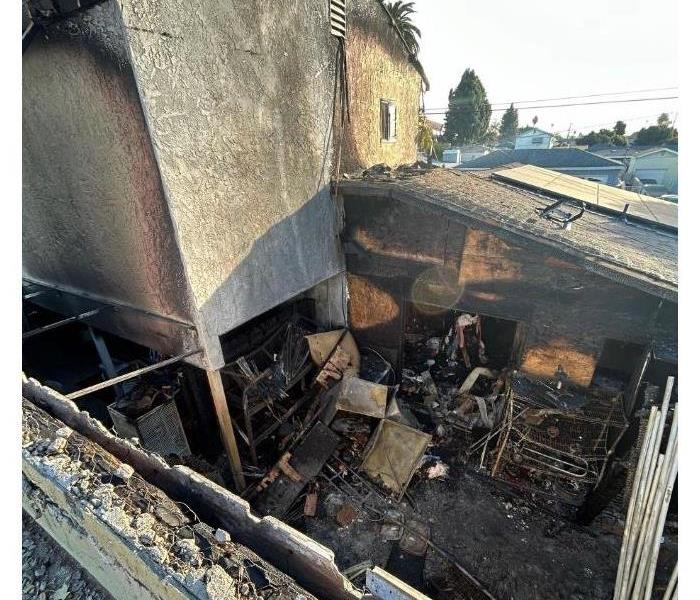A Guide to Fire Extinguishers: Types and How to Use Them Safely
12/12/2024 (Permalink)
Fire extinguishers are essential safety tools that can prevent small fires from turning into devastating emergencies. However, not all fires are the same, and different extinguishers are designed to handle different types of fires. Knowing which extinguisher to use and how to use it effectively is key to ensuring safety during a fire emergency. Let’s explore the main types of fire extinguishers, their uses, and the basics of fire extinguisher operation.
Types of Fire Extinguishers
- Class A – For Ordinary Combustibles
Class A extinguishers are suitable for common materials like wood, paper, cloth, and certain types of plastic. The substance inside is typically water or foam, designed to cool and suppress these flammable items. These extinguishers are not recommended for electrical or grease fires, as water-based extinguishers can conduct electricity and worsen grease fires. - Class B – For Flammable Liquids
Class B extinguishers are intended for fires caused by flammable liquids like gasoline, oil, paint, and solvents. These extinguishers usually contain a dry chemical or CO2, which works to smother the flames by removing oxygen and breaking the chemical reaction. Never use Class B extinguishers on Class A fires, as they won’t cool down ordinary combustible fires effectively. - Class C – For Electrical Fires
Designed for electrical fires, Class C extinguishers are used on fires involving live electrical equipment, such as appliances, circuit breakers, wiring, and outlets. These extinguishers often contain non-conductive agents like carbon dioxide or dry chemicals to safely suppress flames without risking electrical shock. - Class D – For Combustible Metals
Class D extinguishers are specialized for fires involving combustible metals like magnesium, titanium, and sodium. They contain a dry powder specifically formulated for metallic fires, which effectively smothers the flames. This type of extinguisher is mostly found in laboratories or industrial settings where metalwork is common. - Class K – For Kitchen Fires
Kitchen fires are often caused by cooking oils or fats, which can ignite when overheated. Class K extinguishers are filled with a wet chemical solution that reacts with oils to create a barrier between the fuel and oxygen. This type is especially useful in commercial kitchens and highly recommended for anyone who frequently uses deep fryers or oil-heavy cooking.
How to Use a Fire Extinguisher: The PASS Method
While each type of extinguisher is slightly different, the basic technique for using them is universal. The PASS method helps ensure quick and effective action in a fire emergency:
- Pull the pin. Release the locking mechanism so the extinguisher is ready to discharge.
- Aim the nozzle low, toward the base of the fire. This is critical, as aiming too high could be ineffective.
- Squeeze the handle to release the extinguishing agent. Apply steady, even pressure.
- Sweep the nozzle from side to side at the fire’s base. This technique helps cover the flames completely and maximize the extinguisher’s effectiveness.
Tips for Choosing the Right Extinguisher
- Evaluate Your Needs
Consider the types of fires most likely in your setting. For home use, an ABC extinguisher (multi-purpose) is often the best choice because it covers common household fires. - Check the Size
Extinguishers come in various sizes. Larger extinguishers are more powerful but may be heavier to handle. Make sure everyone in your household or workplace can lift and operate it effectively. - Maintenance
Extinguishers need regular maintenance. Check the pressure gauge monthly, ensure the safety pin is intact, and periodically shake the extinguisher to prevent the contents from settling.
Understanding fire extinguisher types and using the PASS technique can make a major difference in controlling a fire until emergency responders arrive. Remember, if a fire seems out of control or hazardous, prioritize safety and call emergency services immediately. If fire damage breaks out in your home or office, give SERVPRO of Whittier a call today!






 24/7 Emergency Service
24/7 Emergency Service
